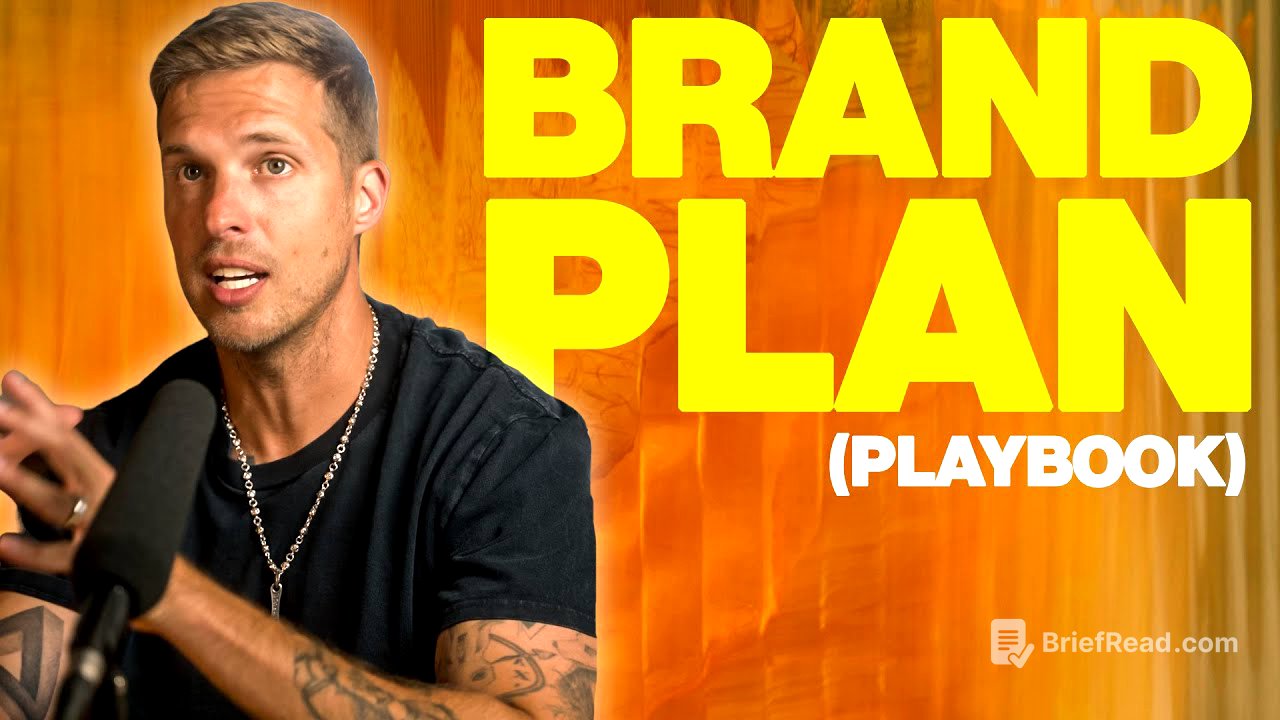TLDR;
This video provides a comprehensive guide to developing a brand narrative by treating a brand like a TV show. It covers identifying plot points, creating a content plan, and using real-life examples from brands like Midday Squares, Alexis Patar, Represent and Poppy. The exercise involves defining plots, events, devices, sets, and characters to build a compelling brand story.
- Brands should view their content like a TV show with plots, sets, and characters.
- Short-form video dominates consumer content creation and brand advertising.
- Brands should document themselves like a reality show or create a fictional show.
- The brand narrative exercise includes identifying events, plot devices, sets, and characters.
- A narrative content plan consists of year anchors, a seasonal plan, and a weekly plan.
Introduction: Treating Your Brand Like a TV Show [0:00]
The video introduces an exercise used in workshops to help brands, both small and large, develop a compelling brand narrative. The core idea is to view a brand's content strategy through the lens of a TV show, complete with plots, sets, and characters. This approach helps brands identify various plot points that can be used to form their narrative and create a content plan that feeds into their marketing efforts. The video aims to demonstrate how to shape a brand story in a modern way, using examples from fashion (Represent) and consumer package goods (Poppy).
Why Treat Your Brand Like a TV Show? [0:49]
The rationale behind treating a brand like a TV show stems from the dominance of short-form media platforms like Instagram and TikTok in consumer content creation and advertising. People now engage with this content in a way similar to how they used to watch traditional TV. The video references examples like "Boy Room" and Kareem's Subway takes show, which are short, episodic series designed for these platforms. Brands should emulate this approach because consumers now consume value and entertainment content side by side, making it essential for brands to compete for attention in a crowded feed.
Brands That Act Like TV Shows [4:08]
The video highlights brands that have successfully adopted a TV show-like approach to their content. Midday Squares, for example, structured their brand identity around a reality show concept, combining business content with a dramatic feel. They developed distinct personalities for the people within the brand. Alexis Patar created a fictional world with various characters and storylines, which allowed them to naturally showcase their jewelry in engaging vignettes. These examples illustrate different approaches, from documenting the brand like a reality show to creating a completely fictional series.
The Brand Story Exercise: Plot, Devices, Sets, and Characters [6:09]
The Brand Story exercise involves several key components: plot, devices, sets, and characters. The plot includes identifying events such as product launches, trade shows, and yearly offsites, and determining which events are worthy of content. Plot devices involve adding drama, narrative connections, recurring ideas, and emotional elements to connect events. Sets refer to the locations where content is filmed, such as office spaces, factories, or one-off locations like trade shows or influencer houses. Characters include team members, community members, allies (other companies or influencers), and opponents (competitors or conceptual enemies).
Creating a Narrative Content Plan: Year Anchors, Seasonal Plan, and Weekly Plan [11:35]
Once the brand story elements are mapped out, the next step is to create a narrative content plan. This plan includes year anchors (fame builders) that occur once or twice a year to generate maximum attention, such as product releases or holiday ad spends. The seasonal plan breaks down content by seasons and stories, outlining key activities and narratives for each season. The weekly plan includes series (recurring content), specials (unique, attention-grabbing content), and ongoing content (pillars and trends). For each content piece, it's important to consider the plot, characters, sets, assets, and networks involved.
Brand Examples: Represent [16:10]
Represent is presented as an example of a brand with a fluid, natural brand narrative. Key characters include CEO George Heaton and his brother Michael, who each contribute different aspects to the brand story. The brand also utilizes influencers and sponsored athletes as characters. Sets include their office, LA store, and various locations where they shoot content. The plot is driven by constant product releases, collaborations, and events. Represent's success is attributed to its ability to naturally integrate these elements into its marketing narrative.
Brand Examples: Poppy [20:15]
Poppy is another example, highlighting how a brand can strategically plan its narrative. The founder's appearance on Shark Tank serves as a recurring plot device. The brand utilizes a combination of the CEO, creators, and employees as characters. The plot revolves around releasing new flavors, entering new retailers, and running campaigns like a Super Bowl ad. Poppy also positions itself against competitors like big soda, while also maintaining a balance to avoid alienating potential acquirers.
Applying the Exercise to a New Brand [22:25]
The video concludes by illustrating how the brand narrative exercise can be applied to a new brand. The speaker discusses their own brand launch, focusing on characters (the speaker themselves, designers, and factory personnel), sets (factories and photo shoot locations), and plot (product launches and collaborations). The goal is to create an open-source brand that resonates with the speaker's content style and involves their network of friends and collaborators. The speaker encourages viewers to use and adapt the exercise for their own brands or clients, emphasizing that it is a valuable tool for building a thorough content plan.
